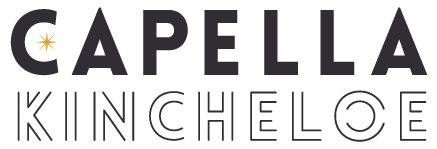BUSINESS OF DESIGN: BEST PRACTICES
Back for another installment of the Business of Design, where I share with the interiors designers out there (and curious clients) about running an interior design business.I've been in interior design for about 10 years now. In that time I've made mistakes, I've had great successes, I've seen others designers flounder and flail, and others have wonderful victories. There are a few things that help things run smoothly. It's incredibly important to have your systems in place for clients. These are non-negotiable ways that you run your business. They are your business decisions, you know that without them, your business could turn into a hot mess.
PLACE ORDERS AFTER CLIENT PAYMENT
Always have the client pay you before you pay the vendor. You could go a step further and require the proposal to be signed as well. This is the approval of the item (sofa, lamp, tile, fabric) and it protects you from client indecision or changed minds. If you order 120 yards of fabric and then your client changes his mind before he has paid you, there is no way to make him pay. You're not a bank, don't give your clients loans.
100% DEPOSIT
This builds on the first practice, but for the same reasons you should get 100% deposit. If your client changes his mind and doesn't want to pay the balance, or if the check doesn't arrive in a timely manner, then you could be stuck with the balance. Again, you're not a bank and unlike a manufacturer you can't resell the item as easily.
HAVE A CLEAR PRICING STRUCTURE
This is such a hot topic in interior design and fellow members of the industry love to know how you price. People ask me all the time about my structure. It's what works for me right now and I tell them that it doesn't matter what pricing structure you decide on as long as your are completely transparent and honest with your clients. Make it clear & easy. I've done a breakdown of the different pricing structures in this post. If you are confident in your services and what you charge for them, the client will also have confidence. If they balk or try to negotiate a pricing structure that you are not familiar with or are uncomfortable with, they are not the right client for your business.
PAY ATTENTION TO HOURS
You are in business and depending on what pricing structure you have worked into your business, you should keep track of your hours. This is especially important for those of us that run small design firms, you need to know whether your spending you time wisely, and if not, what you can trim out. If you divide your yearly profit by your yearly hours, how much are you making an hour? With the overhead and sales taken out of the equation, your $200 per hour charge may dwindle to $20 per hour. This helps you figure if you are billing enough, if your design fees should increase, or if you are fine working for that hourly rate. Knowledge is power.
USE STUDIO DESIGNER
This is the number one tool for keeping my business running smoothly, looking professional, and keeping me organized. It is an accounting & project management platform for interior designers. It keeps orders tidy, you can track hours, pay sales tax, send proposals, purchase orders, requests for quotes, specifications. Its wonderful. You're business is at a disadvantage without this program.
Now it's your turn, share your best practices in the comments below.
Looking for more interior design business advice? Check out my online course, The Golden Blueprint!

